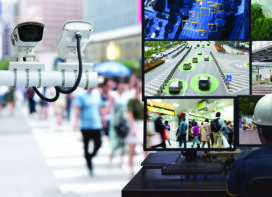 As road transport will play a significant role in sustaining the economic momentum of the country, the Ministry of Road Transport and Highways (MoRTH) has prepared a master plan for the development of Expressways Network. As per the plan, based on financial viability, relative traffic intensity along with various corridor segments, network comprehensiveness, connectivity and relative economic potential, the expressway development programme will be carried out in three phases – 2012, 2017 and 2022.
As road transport will play a significant role in sustaining the economic momentum of the country, the Ministry of Road Transport and Highways (MoRTH) has prepared a master plan for the development of Expressways Network. As per the plan, based on financial viability, relative traffic intensity along with various corridor segments, network comprehensiveness, connectivity and relative economic potential, the expressway development programme will be carried out in three phases – 2012, 2017 and 2022.
These high-speed, access-controlled expressways will be of the four-lane and six-lane facilities. The existing Mumbai-Pune expressway is India’s first six-lane concrete, high-speed and access-controlled & tolled expressway. According to the National Highways Authority of India, there are at present 200km of existing expressways in India and the Ministry of Road Transport and Highways has already finalised the plan to construct a network of over 18,0000km of national expressways by 2022.
Also, in order to provide safe and high speed road network connecting ports, major cities and industrial and agricultural sectors, the Ministry has framed a set of technical guidelines for Expressways in association with Japan International Cooperation Agency. These guidelines will enable the movement of vehicles at a high speed of 120kmph in expressways.
To ensure a smooth flow of traffic, a person switching from one expressway to another at any interchange will not have to pay the toll twice. The toll will have to be paid only at the exit of the expressway. Besides, there will be toll plazas to ensure an uninterrupted flow of the traffic on the main expressway. The service areas for expressways will be provided at intervals of 30 minutes to one hour drive and bus stops shall be located in the service area adjacent to local bus routes. For a closed toll system of expressway, the basic philosophy of design is to provide a layout convenient to both local and expressway bus services that does not involve passing through the toll plaza. The collection operations comprise ticketing systems, toll collection methods and toll gate operations. Operations in toll plaza cover the aspects and activities at entry and exit; control of over loaded/over sized vehicles along with regulatory authorities for imposing necessary legal/penal measures.
The expressway network will be fully access-controlled and only high speed vehicles will be allowed to enter these roads. To ensure safety of the commuters, expressways will have enclosures on both sides. Taking environmental aspect into consideration, the guidelines recommend the expressways to be maintained as greenfield projects. Facilities like toilets, eateries, recreation and night halt too will be provided.
The guidelines, sub-divided in four volumes are targeted at transportation professionals and engineers who either participate in, or are responsible for, project preparation of any phase of the Expressway Project. These professionals (e.g. managers, supervisors, engineers, planners, or technicians) may include public or private practitioners involved with any issue or decision that may directly or indirectly influence the performance of an expressway facility.
 TrafficInfraTech Magazine Linking People Places & Progress
TrafficInfraTech Magazine Linking People Places & Progress


